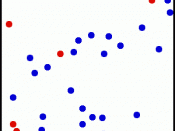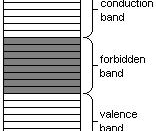Investigating Resistance in a Wire
The resistance is the name given to the tendency for a wire to oppose the movement of the electrons passing through it. The greater the resistance the electrons occur the more voltage is needed to propel the current through the wire. Resistance is defined by the following equation:
Resistance R= p.d across the wire (V)
Current through the wire (I)
Key Factors
There are many factors to be considered which can effect the resistance of a wire these include temperature, current, thickness of wire and the length of the wire. The temperature will affect the resistance because as the temperature rises the atoms in the wire will begin to vibrate more meaning they will get I the way of passing electrons. The problem with this method is that it tricky to vary the temperature of the wire and keep it at the same constant temperature.
The current will effect the resistance because more electrons will be passing through the wire so if collisions do occur with atoms in the wire lots of the electrons will still get through. The thickness of the wire will affect the resistance because in a thick wire opposed to the thin wire there is more space for the electrons to move in thus reducing the amount of collisions and the resistance. Though this is good method it is hard to obtain different thickness of the same wire easily. The length of wire will effect the resistance in a similar way the thickness but the longer the wire the greater the resistance because there will be more of a chance for the electrons and atoms to clash as there are more atoms in the longer wire thus making the length of wire proportional to the increase in resistance.
For this investigation...


